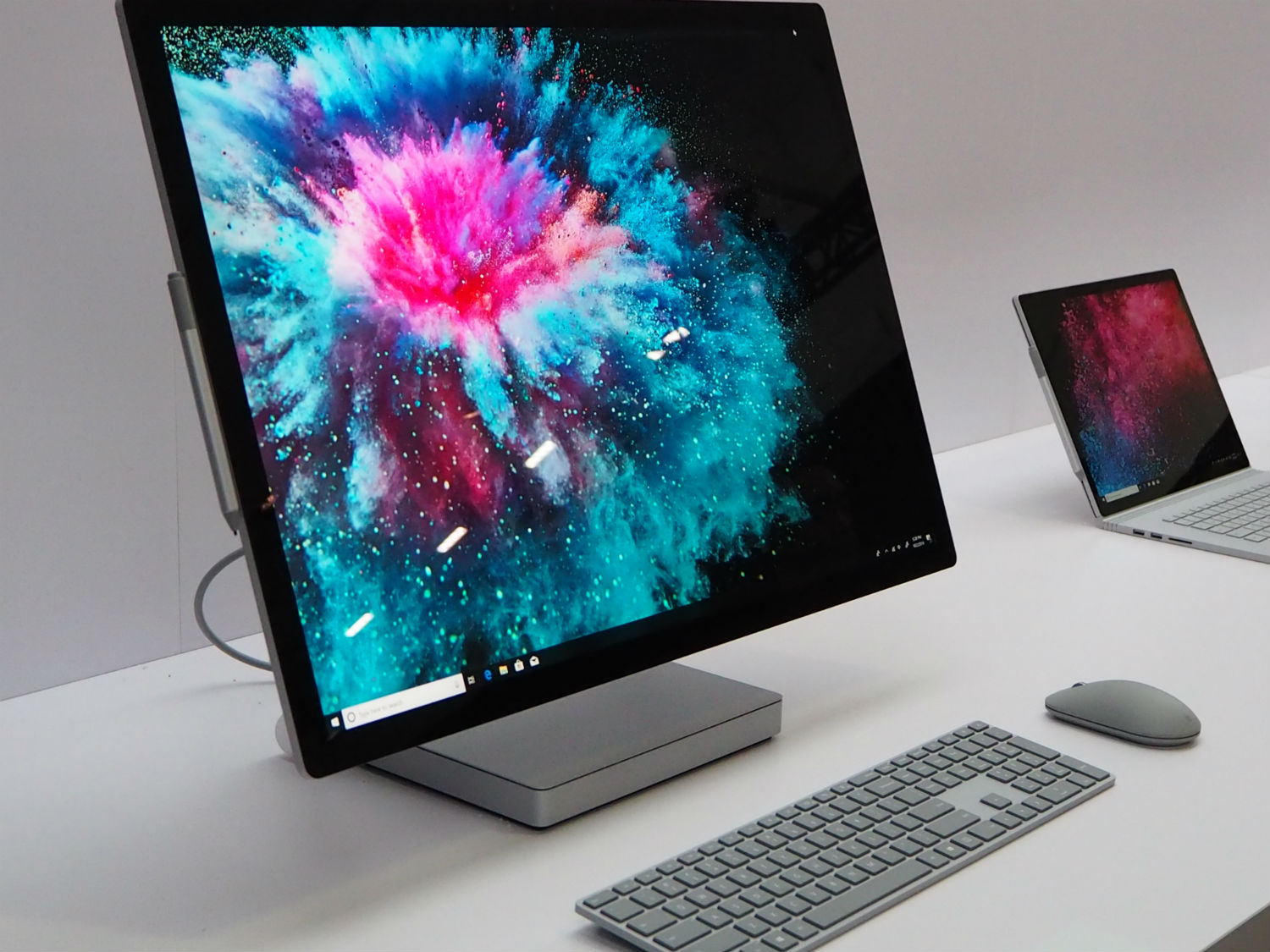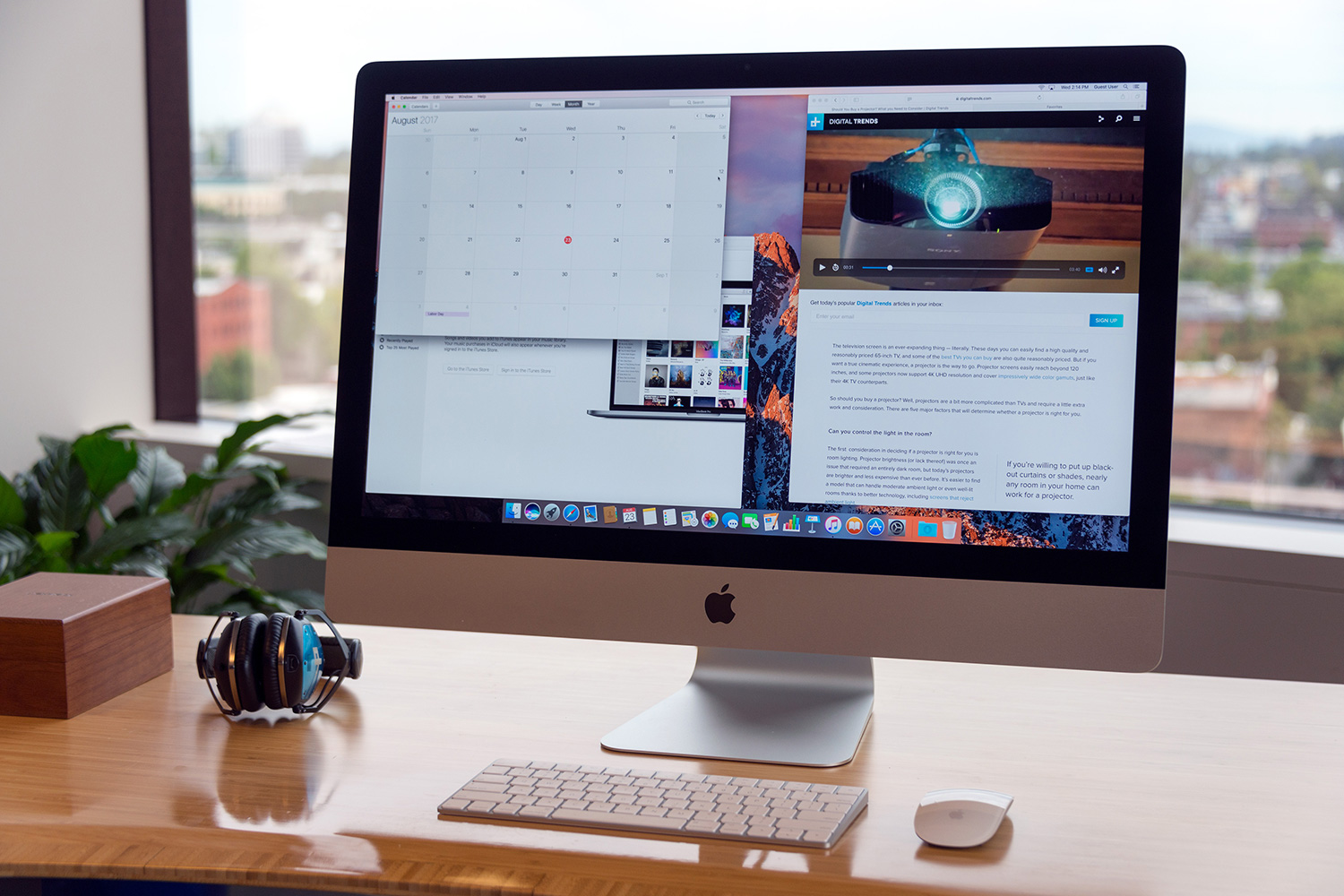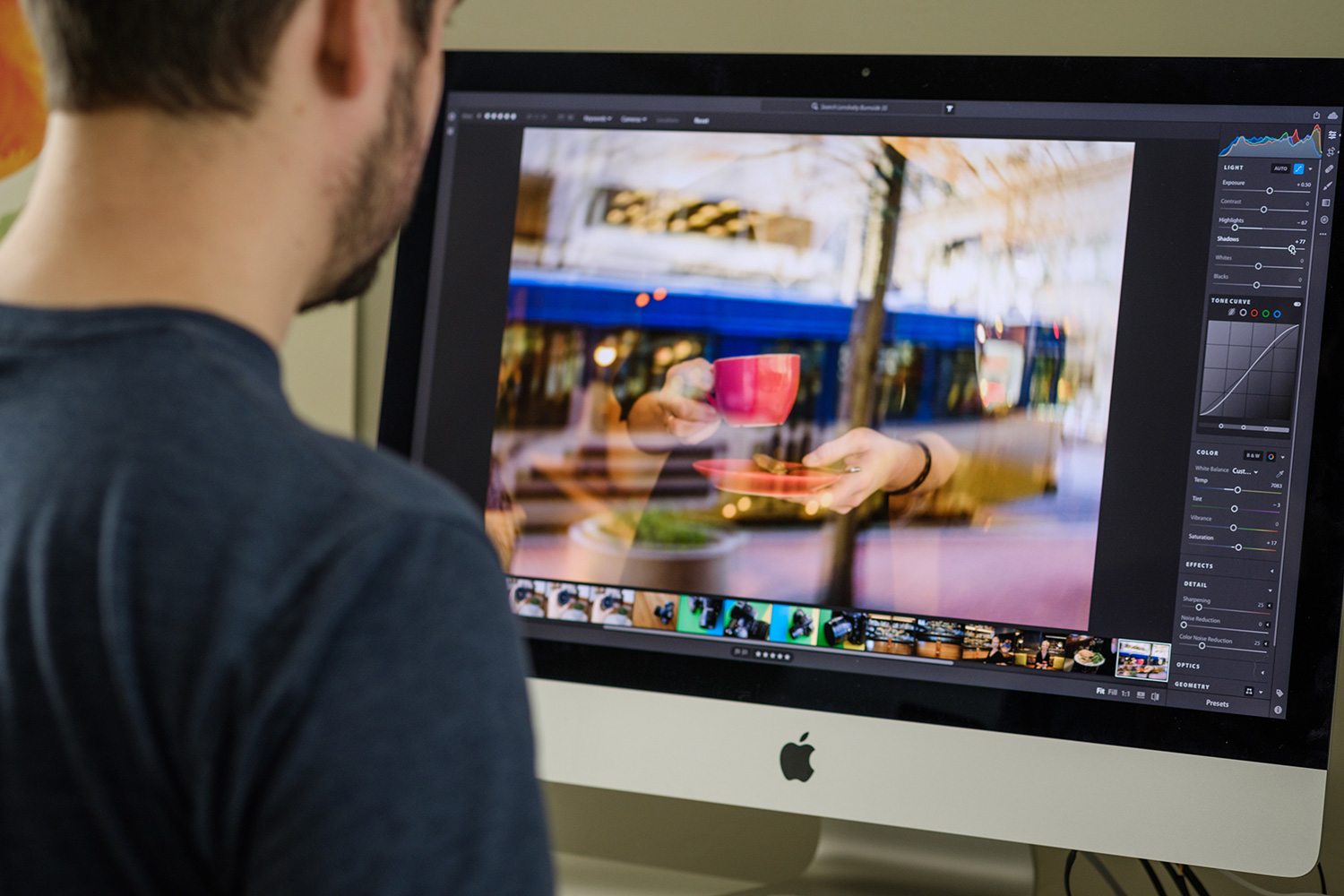
If you’re shopping for an all-in-one desktop to serve as the centerpiece of your home or office workspace, Microsoft’s new Surface Studio 2 and Apple’s iMac (2017) are among the top choices. Both systems are clad in metal bodies, designed with modern and minimalist aesthetics, and are targeted for consumption and creation of content with their built-in better than 4K displays.
Though the iMac was last refreshed last year, it shares the same Intel processor family with this year’s Surface Studio 2. This levels the playing field a bit between the two desktops. So, which one is more deserving of your money? We’ll help you decide by comparing some of the most important features between these two premium systems.
Design

As all-in-one PCs, the iMac and Surface Studio 2 share a similar philosophy by combining the computer’s display with the internal components in a sleek silver-trimmed package. Whereas the iMac houses all the internal PC components behind the display, Microsoft moves the computing components to a thicker base, allowing the rear of the display to be flatter and thinner. Apple hoists its 27-inch non-touch display (a 21.5-inch version is also available) on a slim stand constructed of solid aluminum. The effect is that your attention will be focused on the content on the screen, making the PC and the technology disappear into the background.
The 28-inch screen on the Surface Studio is mounted on two chrome arms that are attached to the PC base. Microsoft uses what it calls a zero-gravity hinge, which allows the touchscreen display to easily adjust to any comfortable angle, allowing the screen to recline and not just tilt. Digital artists can essentially transform the screen into an adjustable easel to create content with the Surface Pen.
Both desktops ship with color-coordinated mouse and keyboard accessories, though the Surface Studio 2 can be used with additional creative tools, like the Surface Pen for drawing and a Surface Dial.
The iMac’s wide color gamut Retina 5K panel supports a resolution of 5,120 x 2,880, with 500 nits of brightness. The Surface Studio 2 has a slightly larger 28-inch 4,500 x 3,000 PixelSense display, and similarly supports a wide color gamut panel. Like other Surface products, the Studio 2 makes use of a 3:2 aspect ratio display, which is better suited for productivity tasks. The iMac’s 16:9 aspect ratio is better adapted for videos. Unless you’re watching cinematic ultra-wide videos, you won’t find letterboxing on the iMac’s screen. Both systems allow you to connect up to two additional 4K UHD displays for a multi-screen setup.
Performance

You can also upgrade the iMac’s configuration to a 4.2GHz quad-core Core i7-7700K CPU if you need more performance. Fully specced, the iMac goes as high as $5,300, but that model ships with 64GB of RAM and a 2TB SSD. Apple offers AMD Radeon Pro 570, 575, or 580 options for discrete graphics, while Microsoft relies on either an Nvidia GeForce GTX 1060 or 1070. There are less configuration options on the Surface Studio 2. You can choose between 1TB or 2TB of solid-state storage and 16GB or 32GB of memory.
Both systems support four USB 3.0 ports, 3.5mm headphone jack, Gigabit Ethernet port, and 3.5mm headphone jack. The main difference is that the Surface Studio comes with a single USB-C port, whereas the iMac ships with two Thunderbolt 3 over USB-C ports. Thunderbolt 3 support means that when graphics cards improve, you can easily add an eGPU to your computer. These ports are located on the rear of the iMac’s display or on the base of the Surface Studio 2.
All these components are packed into a relatively compact package. The iMac measures 20.3 inches tall (including the stand) and has a width of 25.6 inches. The stand’s depth will occupy 8 inches on your depth. The complete package weighs 20.8 pounds. The Studio 2’s display measures 25.1 x 17.3 x 0.5 inches, and the base measures 9.8 x 8.7 x 1.3 inches.
Windows or Mac?

Whether you choose the Surface Studio 2 or the iMac, you should get comparably fast performance. The biggest difference between the two machines — other than the designs — is the ecosystem. The iMac relies on Apple’s MacOS Mojave operating system, which was recently updated to improve your workflow. If you use an iPhone or iPad, going with MacOS will make it easier to pick up and continue tasks on different devices.
The Surface Studio 2 will ship with Microsoft’s Windows 10 operating system. Digital artists who rely on a Wacom tablet may feel more at home with the Studio 2, thanks to the tilting touchscreen display, Surface Pen support, and the Surface Dial as a creative tool. For the average person, however, the starting price of $3,600 is hard to swallow — and for that reason, we’ll give the recommendation to the iMac.
But before you make your final decision, keep in mind that Apple could potentially update the iMac again this year — rumors suggest that Apple may unveil the a new iMac as earlier as later this month.


